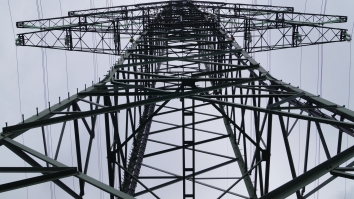Japan's nuclear quest: Full steam ahead?
By Nigel WestBack in 2011, after the Fukushima disaster, it appeared as though Japan’s nuclear dream was in tatters. However, only three years later, the reverse appears to be the case, with the government now beginning to attempt to resurrect Japan’s mothballed nuclear plants.
The news appears to be directly contradictory to the claims of the previous Japanese government that nuclear power in Japan would be eliminated altogether. Unsurprisingly, many are incredibly wary of the new plans, especially with the speed that they appear to have been formulated with.
Work has already begun
The plans were first published on 25th February; and, since then, work has already begun on restoring the country’s 48 mothballed nuclear reactors. The process is intensive and, at present, there are well in excess of 100 workers carrying out the work.
The urgency of the project stems from the fact that Japan’s budget deficit continues to grow while many companies are facing spiralling electricity costs. All in all, poor Asian data figures appear to be driven by rising imports and a lack of business confidence.
To kick-start the economy, many believe that revisiting the prospect of nuclear power is the only option. There also appears to be a consensus (within government at least) that this may be the last chance to switch the plants back on.
In 2011, when the plants were originally switched off, many warned against rolling power cuts due to a lack of power. This, however, never properly materialised and public opinion has begun to harden against nuclear power, with an increasing number of citizens seeing nuclear plants as unnecessary.
The government appears to think that waiting any longer will see opinion solidify further, increasing the political risk.
Safety reinforced and regulation increased
It is well worth noting that since the Fukushima disaster, Japan’s rather lax attitude to nuclear safety has been revamped and, although there were protests last time a nuclear reactor was reopened, it is likely that some sectors will be more open to the idea this time due to this increased regulation of nuclear power.
The common consensus is that the newest reactors will be the first to turn back on, with some being switched on as early as this summer. Undoubtedly, the first will be the hardest; but once this has occurred, it seems likely that the process will accelerate.
Opponents to the scheme still point to the Fukushima disaster, while others describe it as a sticking plaster that only masquerades the problem rather than solving it entirely. Sadly, many simply remain too scared by the Fukushima disaster to ever fully trust nuclear power again; and it is easy to see why.
What does the future hold?
Whether you believe in nuclear power or not, the sounds coming from the debate have now become deafening. Last year, plans were approved to finish building plants that were under construction at the time of the Fukushima disaster.
Only a year ago, such a plan would have been unthinkable. By the summer, nuclear power could once more be operational. With the debate continuing at such a rapid speed, it appears as though it could be full steam ahead for Japan’s nuclear sector after all.
























 Advertise
Advertise







